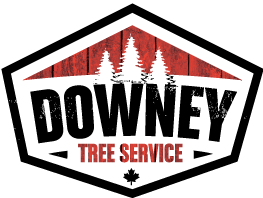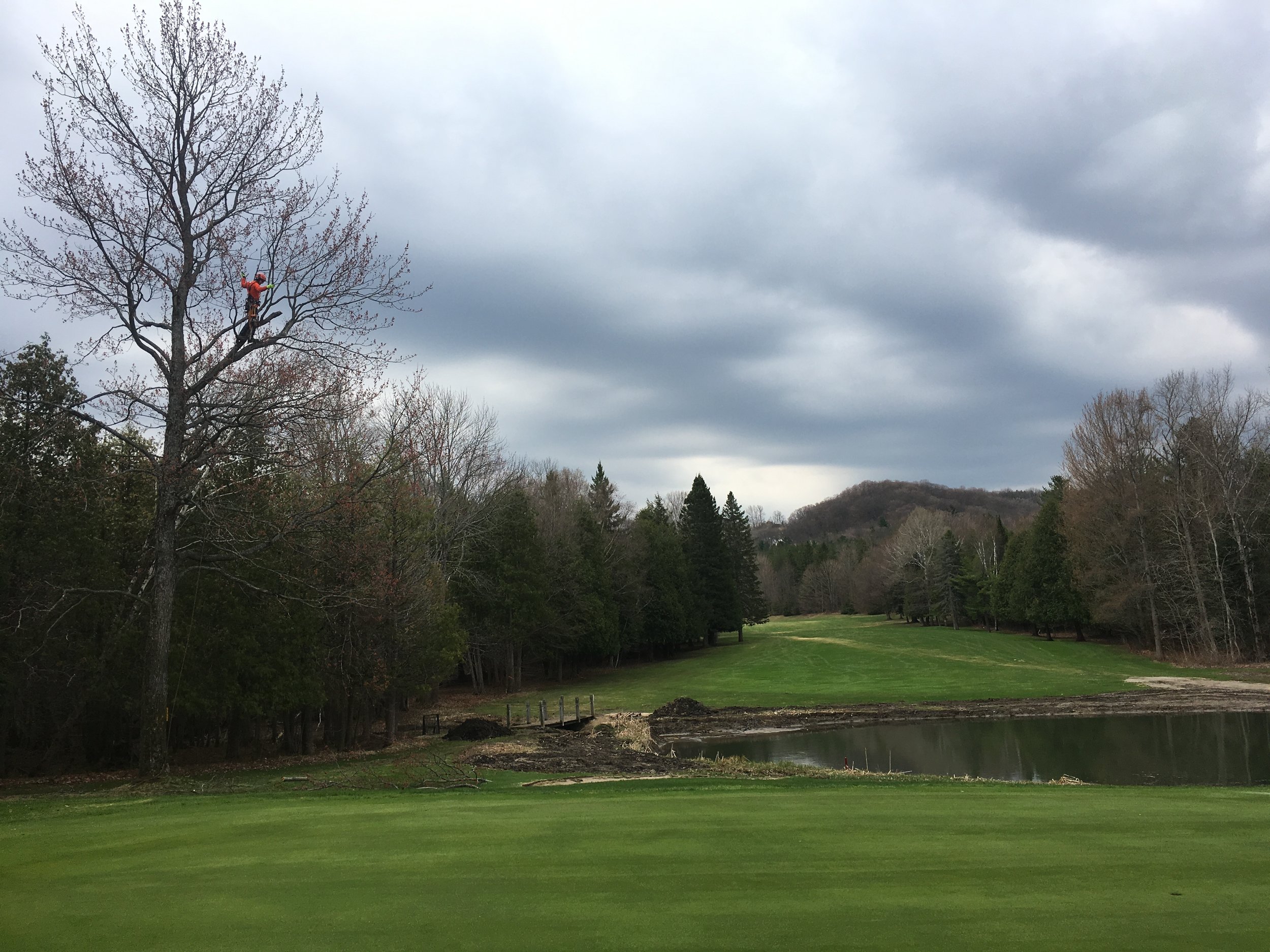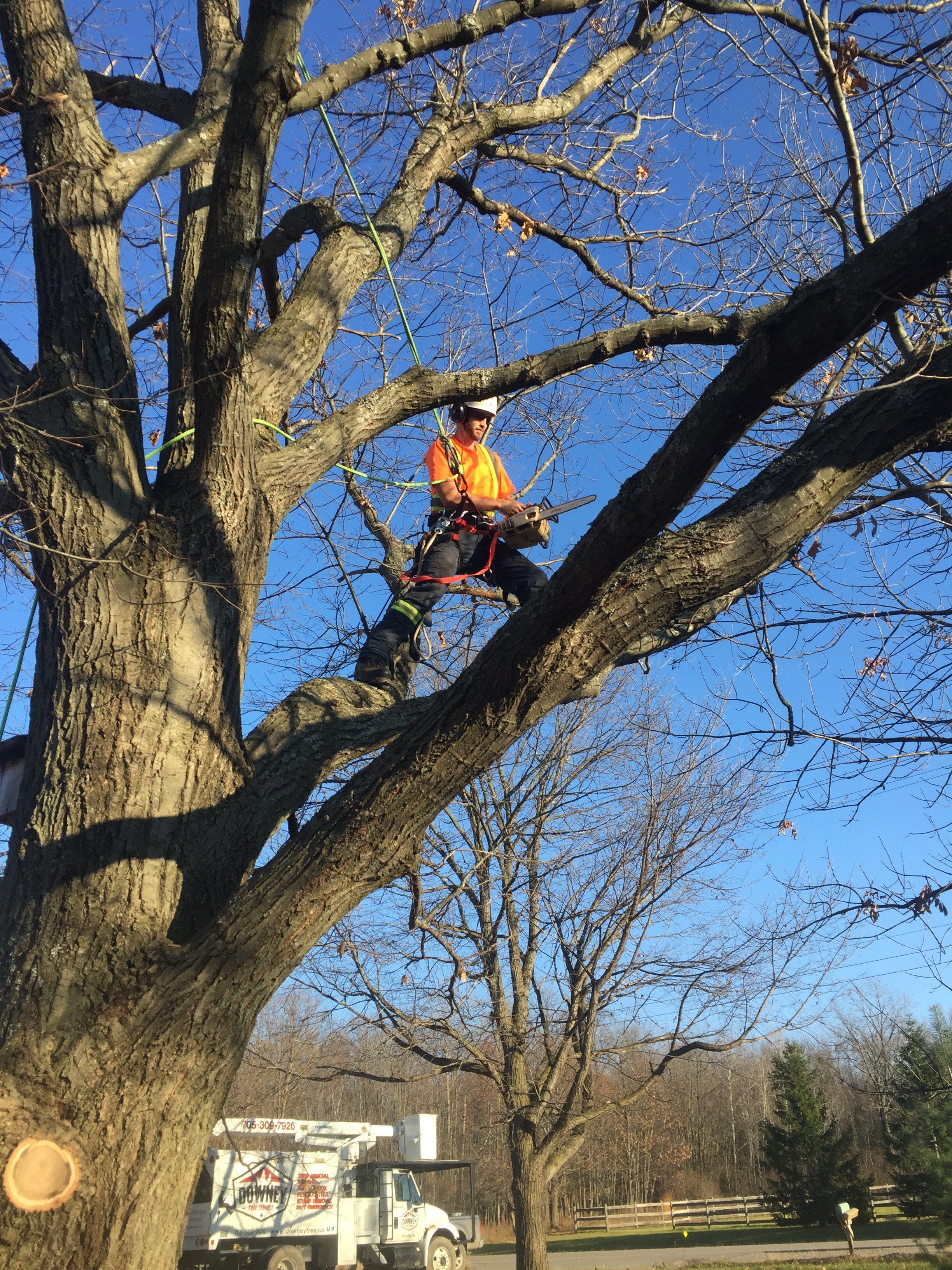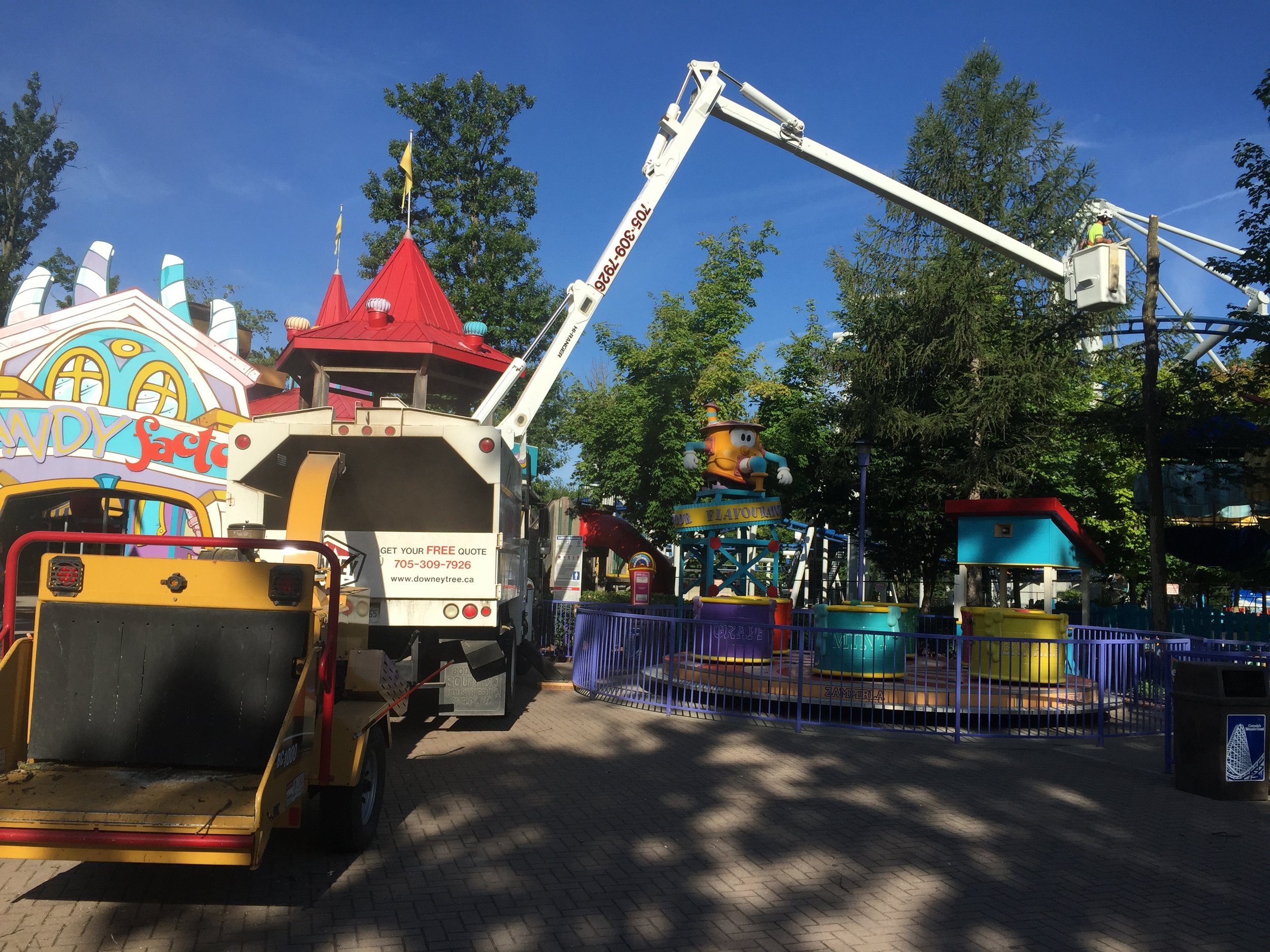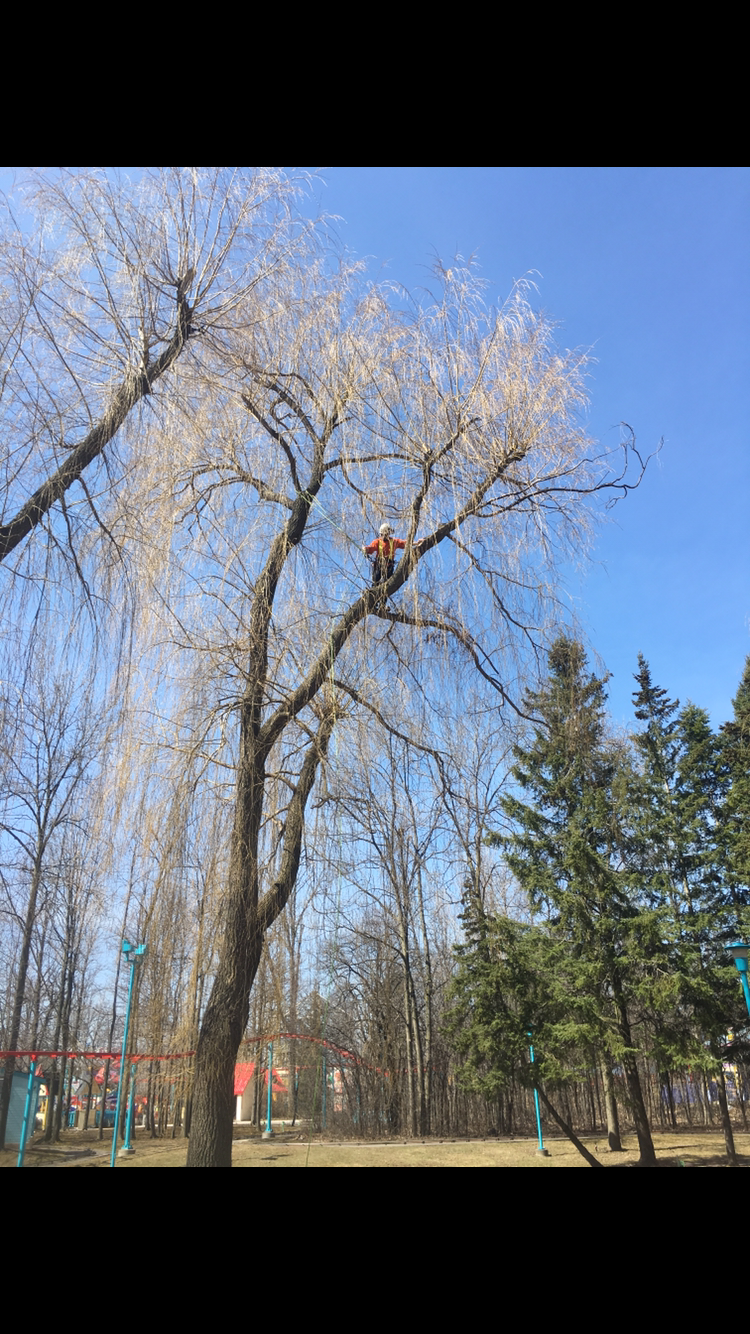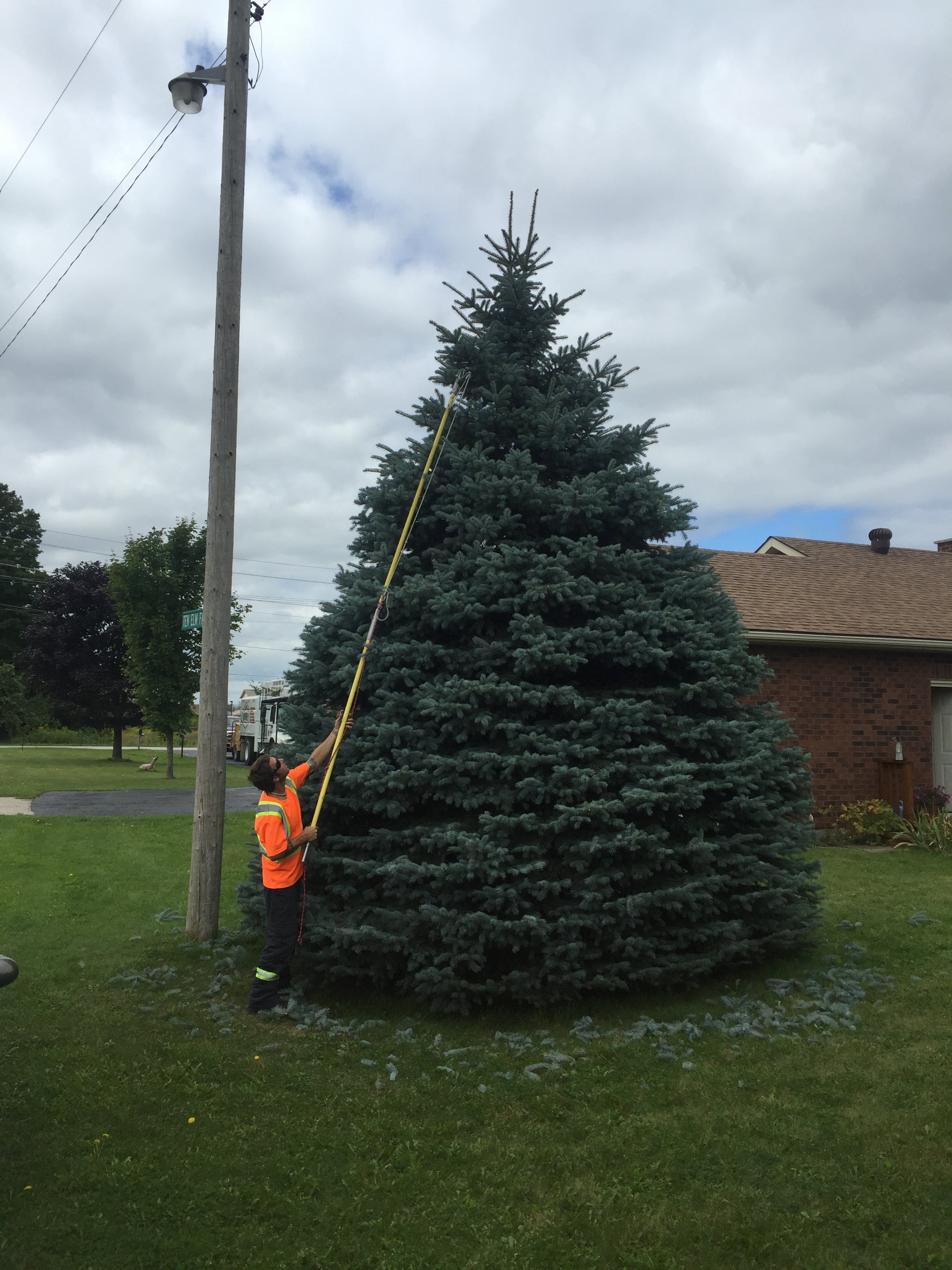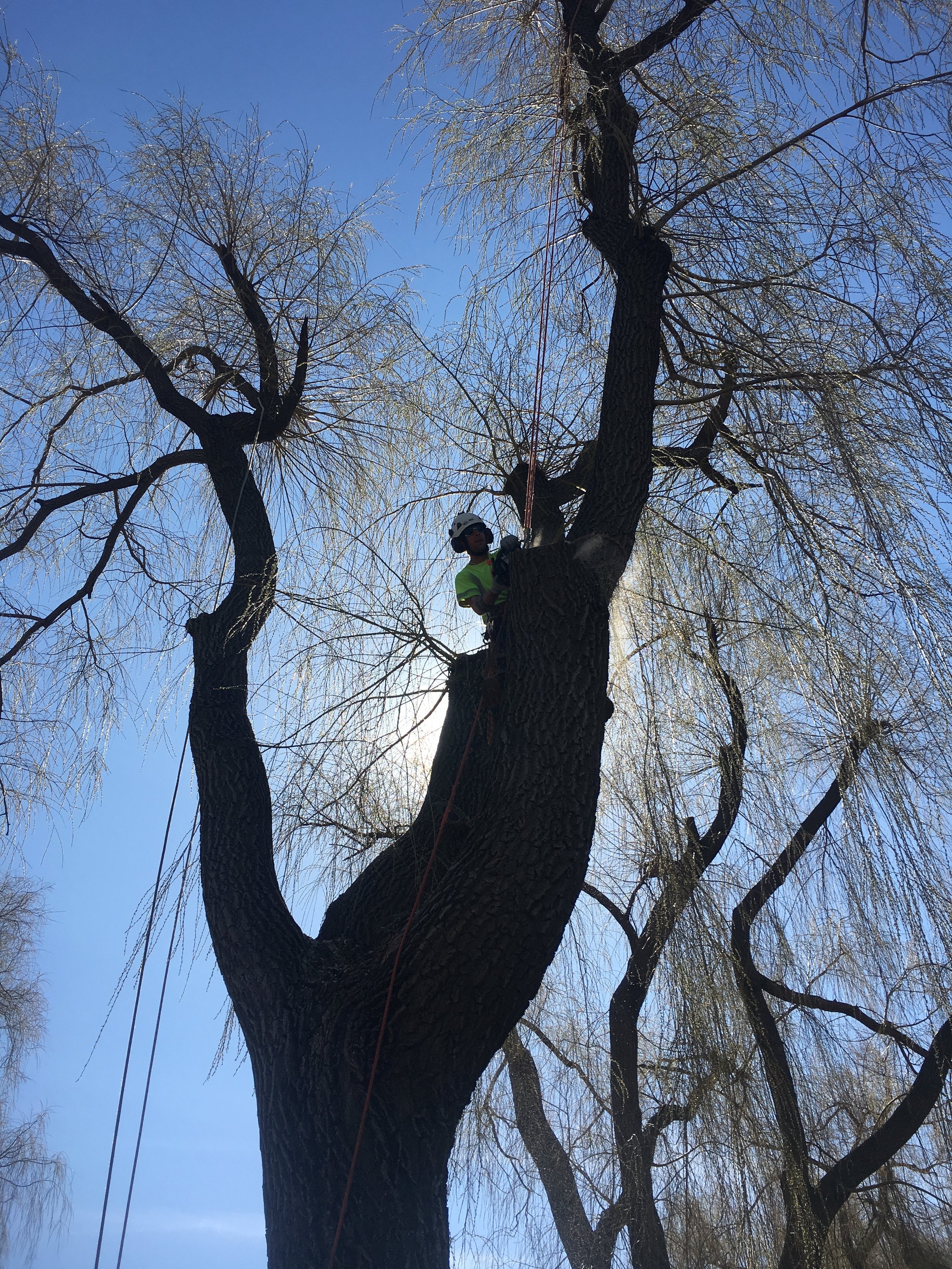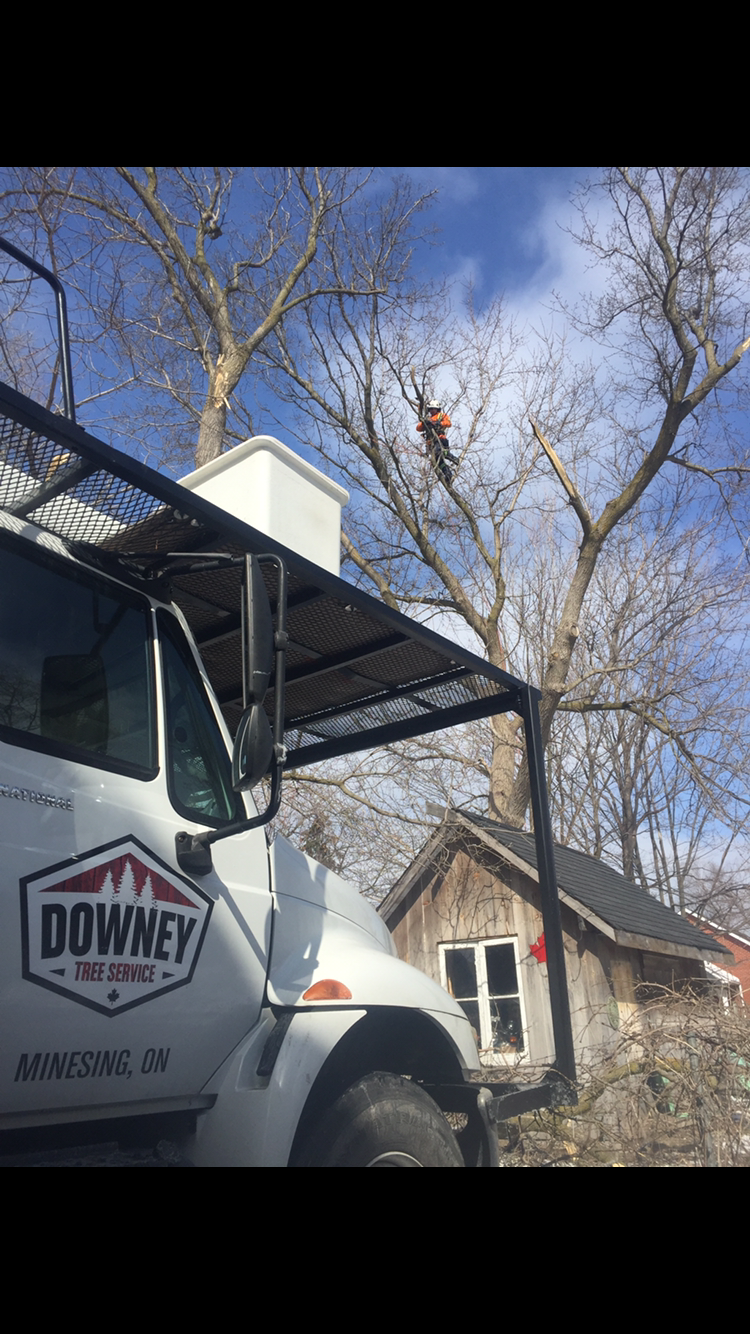Tree Pruning
Tree pruning, commonly referred to as trimming, is the practice of cutting away dead or living branches from a tree. Although it’s common for trees in natural settings to grow with defects, deadwood, and a high level of unpredictability, trees in urban areas require more care to mitigate their potential dangers, while maintaining their beauty.
There is a proper way to achieve almost any goal with a tree. Here are some of the most common pruning techniques we employ:
General Maintenance Pruning
General maintenance pruning includes the removal of any dead/dying branches, or those with poor attachment points. Interfering/crossing branches, as well as any corpus growth or suckers are also removed. We perform clearance pruning cuts to clear branches away from structures, roadways or other targets nearby.
Crown Elevation
A lot of trees have low-hanging branches that are not ideal in urban situations. These branches often impede on sidewalks, driveways or roadways, and can take away sight-lines. Crown elevation pruning will help you properly manage these branches and eliminate these issues.
Structural Clearance Pruning
Maintaining clearance of buildings and other infrastructure is important. Critters like squirrels and raccoons like to use trees as “bridges” to buildings which can create issues with nesting and noise. The buildup of organic matter from trees (leaves, needles, acorns, sap, etc.) can plug eavestroughs, and rot shingles. Prevent these issues before they occur with a structural clearance pruning.
General Structural Pruning
Structural pruning is generally perceived as preventative, and should be done when trees are fairly young. This type of pruning is done to ensure that a tree grows into maturity with proper structure. A certified arborist is trained to know the characteristics of each species, and how it’s supposed to grow. A structural pruning can help set your trees up for a long and healthy life.
Canopy Thinning
Dense canopies not only create airflow issues for your trees, but your entire landscape. A combination of moist conditions, and lack of airflow, almost always leads to some sort of fungal issues for your trees and gardens. All trees have pruning thresholds, and thinning should always be done by a professional to ensure consistency from top to bottom, and to avoid changing the dynamics/mechanics of the tree.
Crown Reduction Pruning
Crown reduction is not topping. It is the proper way, through drop-crotch pruning techniques, to manage the height and spread of your tree’s canopy. If that beautiful maple beside the pool is robbing you of afternoon sun, there may be a way to help, that doesn’t harm the tree!
Although it may look easy to trim a tree, it's not. It’s more than just removing branches and making cuts that ‘look good’. Not only can it be quite dangerous, but it can badly damage your trees and put them in a decline phase that’s hard and expensive to reverse. Pruning must be done with an understanding of tree biology. Every wrong cut will create lasting damage, and could affect the lifespan and structural integrity of your tree.
Our ISA Certified arborists have up-to-date training on proper pruning techniques, and the experience to execute with care. Our attention-to-detail on every cut ensures the trees will seal the pruning cuts in following years. Trees with regular maintenance are also much less prone to failing in storms, as issues are identified and dealt with preventively.
At Downey Tree Service, spurs are NEVER worn while we prune. We also do not use pruning paint to seal wounds as it has been proven to be ineffective. We are up to date on all industry standards, and follow them closely.
Get in touch if you’re ready to invest in your trees!
